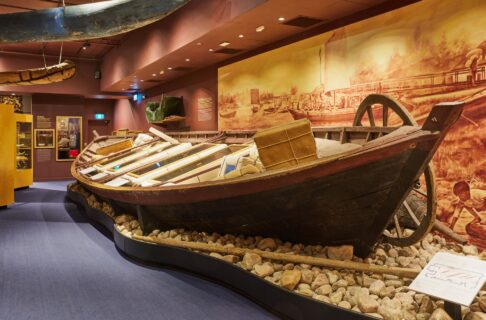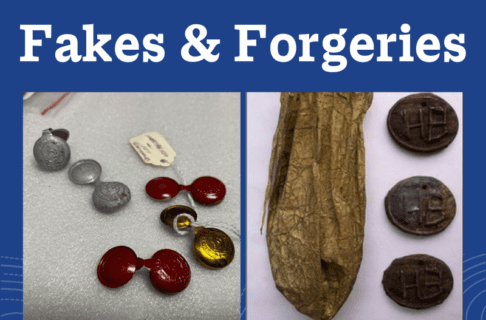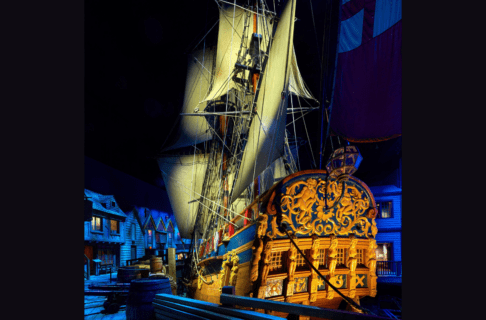Posted on: Tuesday November 26, 2013
Even though the HBC collection is full of amazing treasures, I’m always interested in acquiring other special items with an HBC connection. Curators at The Manitoba Museum can’t just add items willy-nilly, we go through a process with our Collections Committee to make sure that we’re acquiring items that are significant to Manitoba (or in my case, significant to the HBC, which has a much broader geographic scope). I had some help navigating this pre-acquisition process from our Curator of History, Roland Sawatzky, who had been in touch with the donor prior to my arrival, and he showed me the ropes.
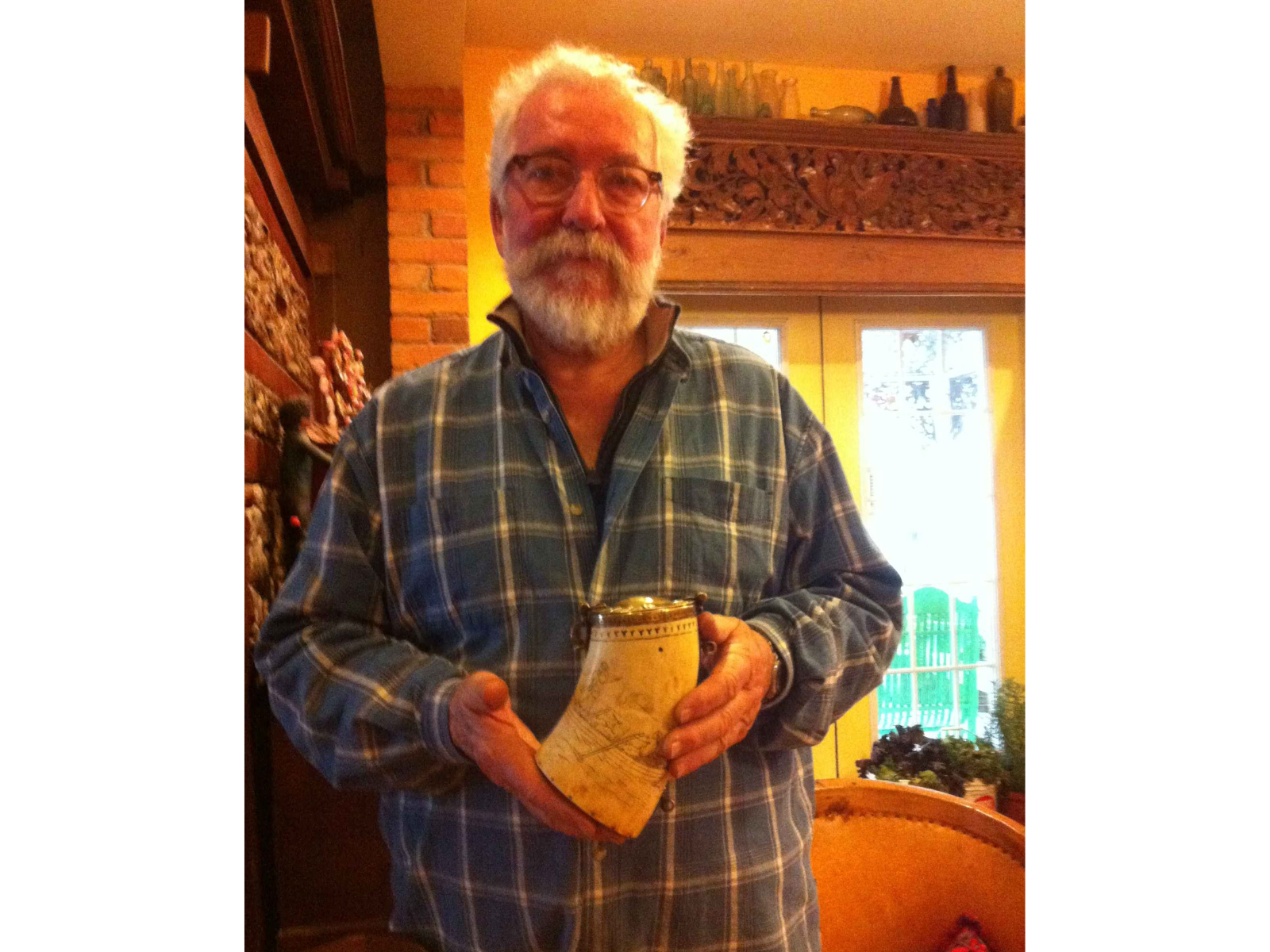
I’m sure you’re dying to know what I’ve picked up for the HBC collection, and I literally picked it up as the donor lives in Toronto and I happened to be there to meet with the HBC History Foundation. Following my meetings I met up with Stewart Scriver, he’s a fascinating guy who owns a cool vintage shop (if you’re in Toronto check it out, Courage my Love in Kensington Market) and has a personal collection of some really neat things from all over the world.
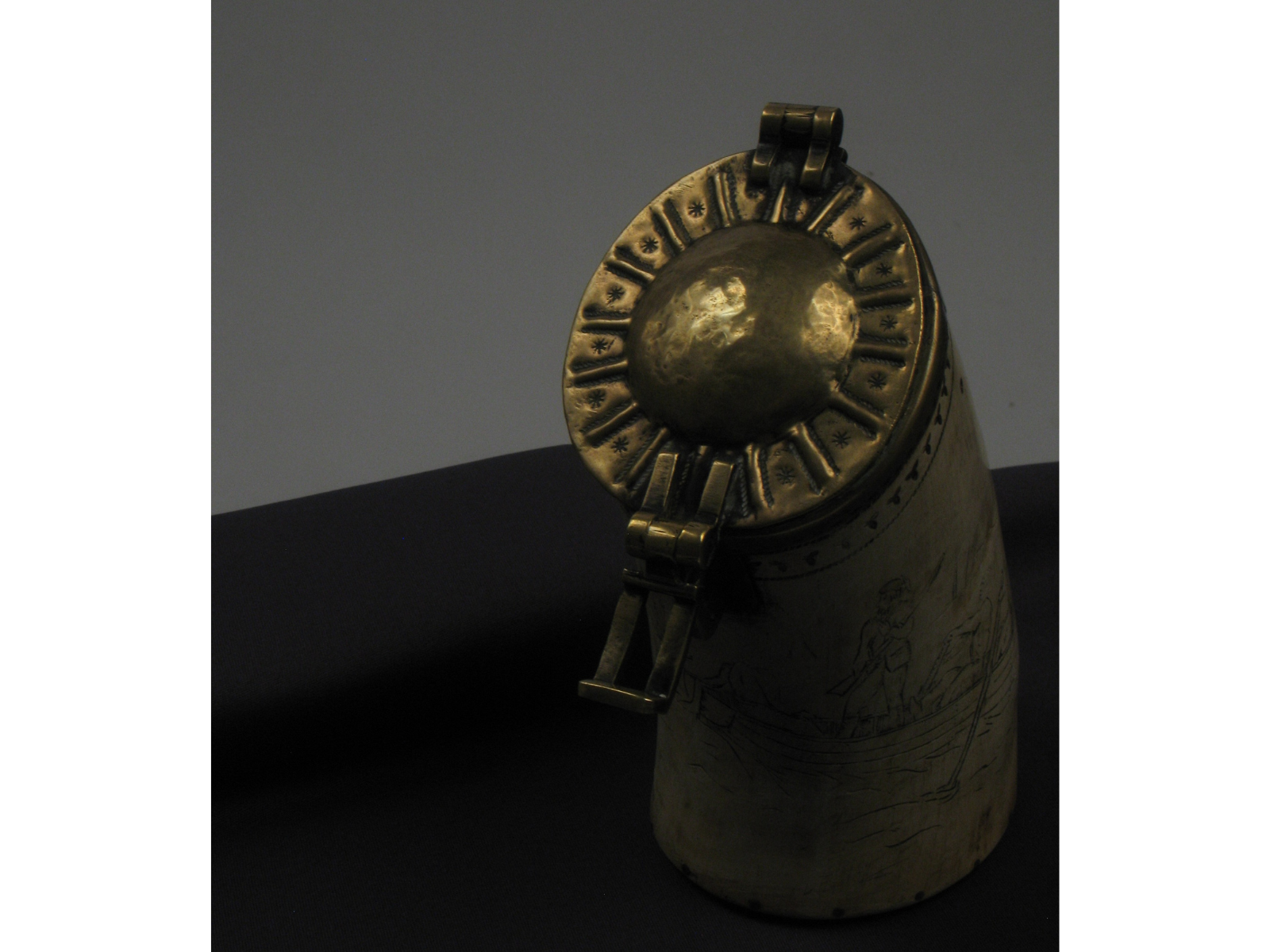
What’s he holding?
Why that’s a scrimshawed horn!
Scrimshaw is an art form that involves engraving ivory, bone, teeth (typically from sperm whales) or horn. The practice originated with whalers who had access to these marine mammal parts. A black pigment is rubbed into the etching to bring it out, traditionally this would have been soot (lampblack) but later ink was used. We have lots of great scrimshawed pieces in the HBC collection, but none quite like this.
Image: The horn standing upright, note the detail on the brass lid.
What makes this one so special?
Well, for one it’s a horn and not a piece of marine mammal. Its function is also uncertain, it has a wooden base and brass lid so it must have been used to contain something but it’s not like a traditional powder horn. If you have ideas on what this might have been used for please leave them in the comments!
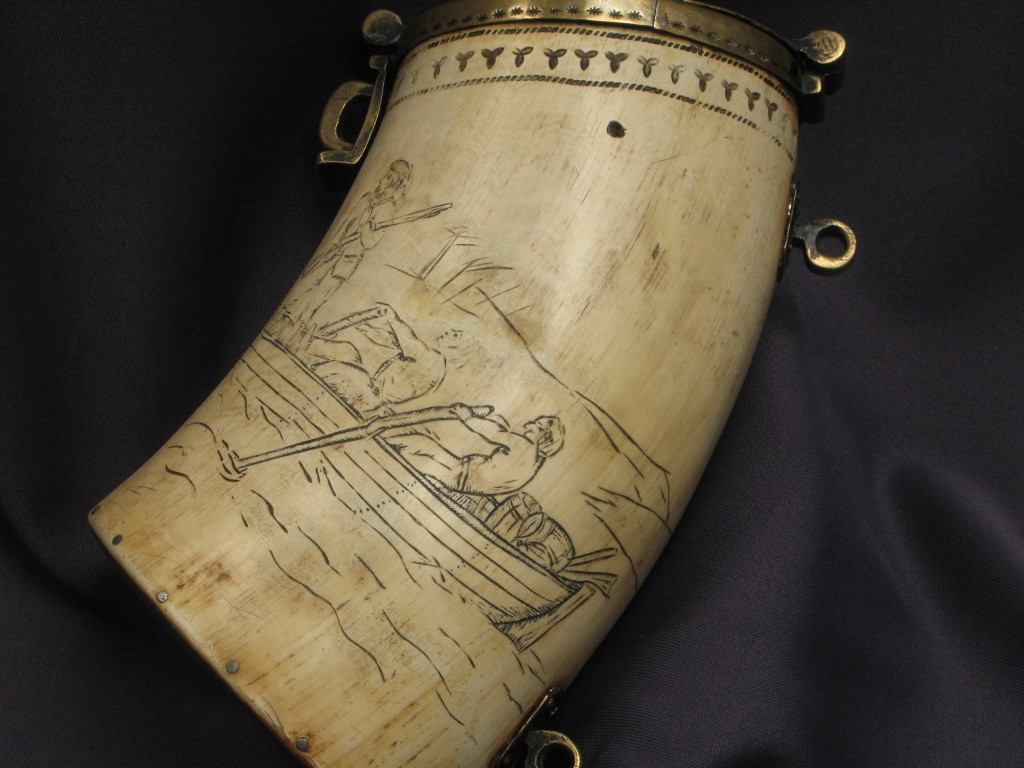
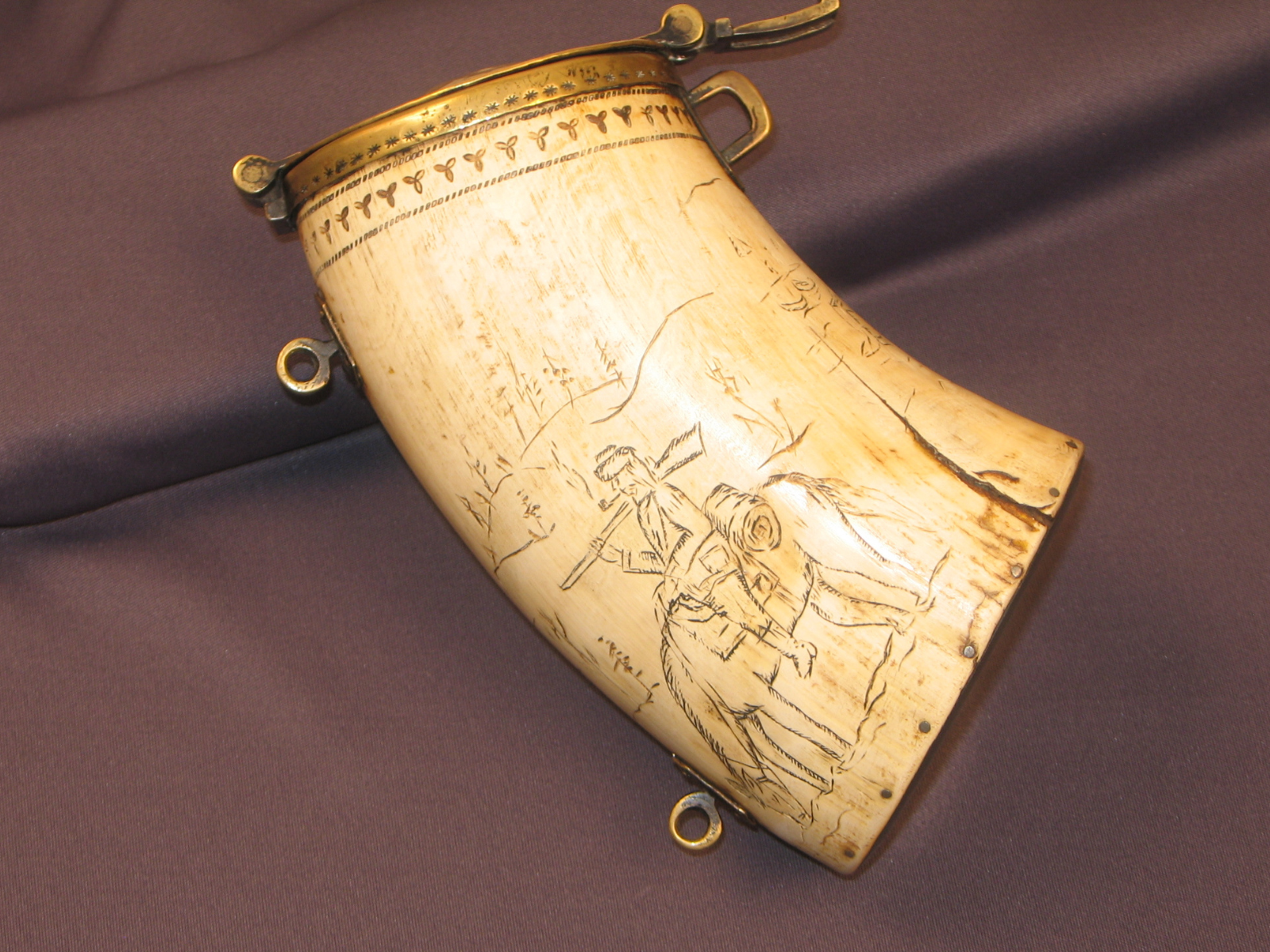
One part of the scene depicts men rowing a York Boat, the other side is a man on a horse smoking a pipe.
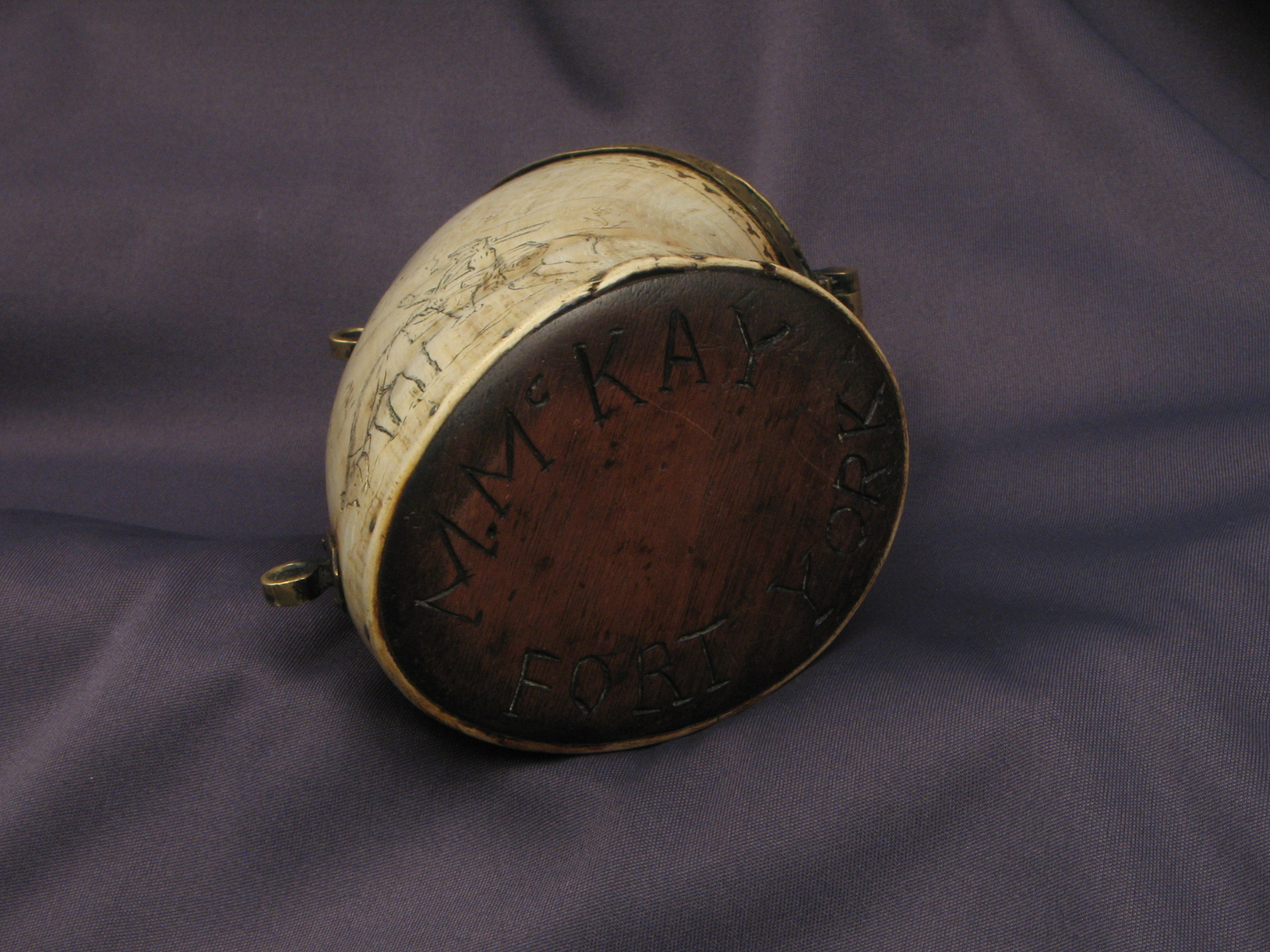
What’s the HBC connection?
Take a close look at the bottom, see that name? M. McKay? There was an M. McKay (Malcolm) who worked for the HBC, he started out at York Factory from 1841-1842. Yes, I know it says ‘Fort York’ not York Factory, but in the early days it was probably called Fort York (and we all know how names can stick). The donor also had the horn looked at by a Curator in Toronto and, based on the engraved images, he determined that it couldn’t possibly be the Fort York in Ontario.
I still have some research to do, but I wanted to share my first acquisition with you because I’m pretty pumped about it. More to come!




